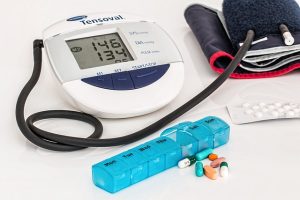Post-traumatic stress disorder (PTSD) is a mental health condition stemming from traumatic experiences, characterized by symptoms like flashbacks, nightmares, and avoidance behaviors. Early intervention and various therapeutic approaches, including Cognitive Behavioral Therapy (CBT), Eye Movement Desensitization and Reprocessing (EMDR), trauma-focused mindfulness practices, group therapy, and self-care, are key to effective PTSD treatment. CBT targets negative thought patterns, EMDR desensitizes individuals to distressing memories, mindfulness practices promote present-moment awareness and emotional regulation, group therapy offers community support, and self-care enhances overall well-being during the healing process.
“Survivors of traumatic events often struggle with post-traumatic stress disorder (PTSD), a condition that impacts their daily lives. This article explores comprehensive PTSD treatment options, offering insights into various therapy approaches designed to heal and empower individuals affected by trauma. From understanding the symptoms and diagnosis of PTSD to exploring effective treatments like Cognitive Behavioral Therapy (CBT) and Eye Movement Desensitization and Reprocessing (EMDR), we provide a roadmap for recovery. Additionally, we delve into trauma-focused mindfulness, group therapy, and essential self-care strategies for building resilience.”
Understanding PTSD: Symptoms and Diagnosis

Post-traumatic stress disorder (PTSD) is a mental health condition that can affect individuals after they’ve experienced or witnessed a traumatic event. It’s more than just feeling scared or anxious; PTSD involves intense, disturbing thoughts and feelings that disrupt daily life and last for more than a month. Symptoms can include flashbacks, nightmares, severe anxiety, avoidance of reminders of the trauma, and heightened irritability or anger.
Diagnosis typically involves a comprehensive evaluation by a qualified mental health professional who will consider symptoms, duration, and impact on daily functioning. The American Psychiatric Association’s Diagnostic and Statistical Manual (DSM-5) provides specific criteria for diagnosing PTSD, ensuring a consistent and accurate assessment. Early intervention and PTSD treatment are crucial in helping survivors manage symptoms, heal, and regain control of their lives.
Common Therapy Approaches for Trauma Survivors

Many different therapy approaches are available to help trauma survivors process and overcome their experiences. One widely recognized and effective method is PTSD treatment, which focuses on managing symptoms of Post-Traumatic Stress Disorder, a common outcome of traumatic events. Cognitive Behavioral Therapy (CBT) is a key component within PTSD treatment, helping individuals challenge negative thoughts and behaviors linked to the trauma. By modifying these thought patterns, survivors can reduce anxiety, depression, and flashbacks, regaining control over their lives.
Another popular approach is Eye Movement Desensitization and Reprocessing (EMDR), which facilitates the processing of traumatic memories through side-to-side eye movements while recalling the event. This method helps desensitize individuals to distressing memories, enabling them to view their experiences in a new, less threatening light. Additionally, trauma-focused mindfulness practices are gaining popularity for their ability to help survivors stay present and grounded while cultivating compassion towards themselves and their experiences.
Cognitive Behavioral Therapy (CBT) for PTSD

Cognitive Behavioral Therapy (CBT) is a well-known and effective approach for treating Post-Traumatic Stress Disorder (PTSD). This therapy focuses on identifying and changing negative thought patterns and behaviors that may have developed as a result of the traumatic event. By challenging these unhelpful thoughts, CBT helps survivors regain control over their emotions and reduce the intensity of distressing memories or flashbacks.
The process involves various techniques such as exposure therapy, where patients are gradually exposed to reminders of the trauma in a safe environment, helping them confront and overcome their fears. CBT also teaches mindfulness and relaxation strategies to manage anxiety and stress. This form of therapy empowers individuals to develop healthier coping mechanisms, improving their overall well-being and quality of life.
Eye Movement Desensitization and Reprocessing (EMDR)

Eye Movement Desensitization and Reprocessing (EMDR) is a powerful therapy approach specifically designed to help individuals heal from trauma and post-traumatic stress disorder (PTSD). This innovative method facilitates the processing of distressing memories, reducing their impact on an individual’s emotional well-being. During EMDR therapy, clients focus on traumatic memories while engaging in bilateral stimulation, typically through side-to-side eye movements, taps, or tones. This process helps desensitize the mind to traumatic content, allowing individuals to reframe and reinterpret these memories in a more adaptive way.
EMDR has gained recognition as an effective PTSD treatment, with numerous studies supporting its benefits. It empowers survivors to work through their trauma in a safe and controlled manner, enabling them to regain control over their lives. By addressing the root causes of distress, EMDR offers a transformative path towards healing and resilience for those affected by traumatic experiences.
Trauma-Focused Mindfulness Practices

Trauma-focused mindfulness practices have emerged as a powerful tool in the PTSD treatment arsenal. By training the mind to be present and non-judgmental, these techniques help individuals process and manage traumatic memories and emotions more effectively. Mindfulness meditation, for instance, encourages individuals to observe their thoughts and feelings without reacting impulsively, fostering a sense of calm and self-awareness. This can significantly reduce symptoms of anxiety, depression, and flashbacks often associated with PTSD.
One particular mindfulness approach, Eye Movement Desensitization and Reprocessing (EMDR), has gained prominence in the field. EMDR integrates mindfulness principles with bilateral stimulation, such as side-to-side eye movements or taps, to help individuals process traumatic memories. This unique method facilitates the brain’s natural healing process, allowing individuals to reframe negative beliefs and reduce the emotional intensity linked to traumatic experiences. As a result, those who engage in trauma-focused mindfulness practices can develop healthier coping mechanisms and improve their overall well-being.
Group Therapy for Healing and Support

Group therapy offers a powerful platform for trauma survivors seeking healing and support in their PTSD treatment journey. In a safe, structured environment, individuals share their experiences, fostering a sense of community and understanding. This collective approach allows participants to witness they are not alone in their struggles, breaking down isolation often associated with trauma. Group members learn from one another’s resilience, coping strategies, and unique perspectives.
The dynamic between group members can significantly enhance the therapeutic process. Peer support provides a valuable network, encouraging accountability and progress. Through open dialogue, individuals gain new insights into their behaviors and emotional responses, promoting self-awareness and personal growth. This collaborative aspect of group therapy is particularly effective in challenging trauma-related beliefs and fostering a sense of empowerment.
Building Resilience: Self-Care Strategies for Trauma Survivors

Building resilience is a crucial aspect of healing from trauma, especially for those navigating PTSD treatment. Self-care strategies play a pivotal role in empowering survivors to cope and regain control over their lives. Simple yet effective practices like regular exercise, mindfulness meditation, and maintaining a structured routine can significantly enhance emotional well-being. These activities help reduce stress, improve sleep, and foster a sense of calm—all essential elements for trauma recovery.
Additionally, prioritizing self-care involves setting healthy boundaries and engaging in activities that bring joy and relaxation. This might include spending time in nature, practicing hobbies, or connecting with supportive networks. By incorporating these strategies into their daily lives, trauma survivors can build resilience, boost their ability to cope with triggers, and take significant steps towards a fulfilling recovery journey.
